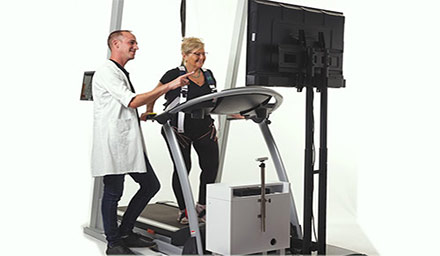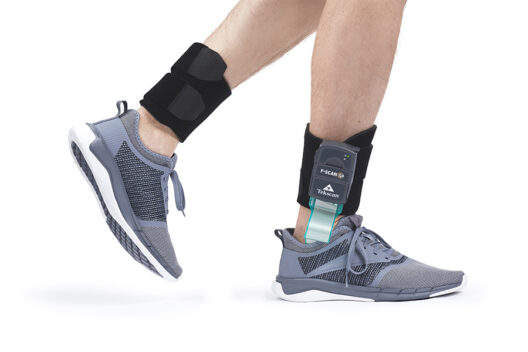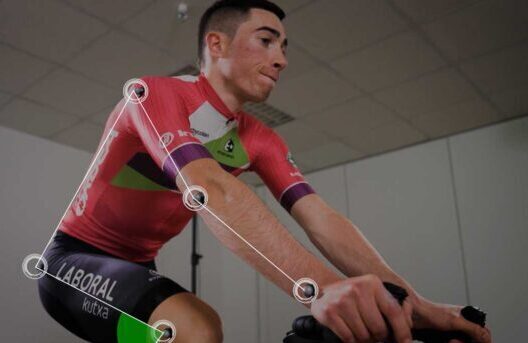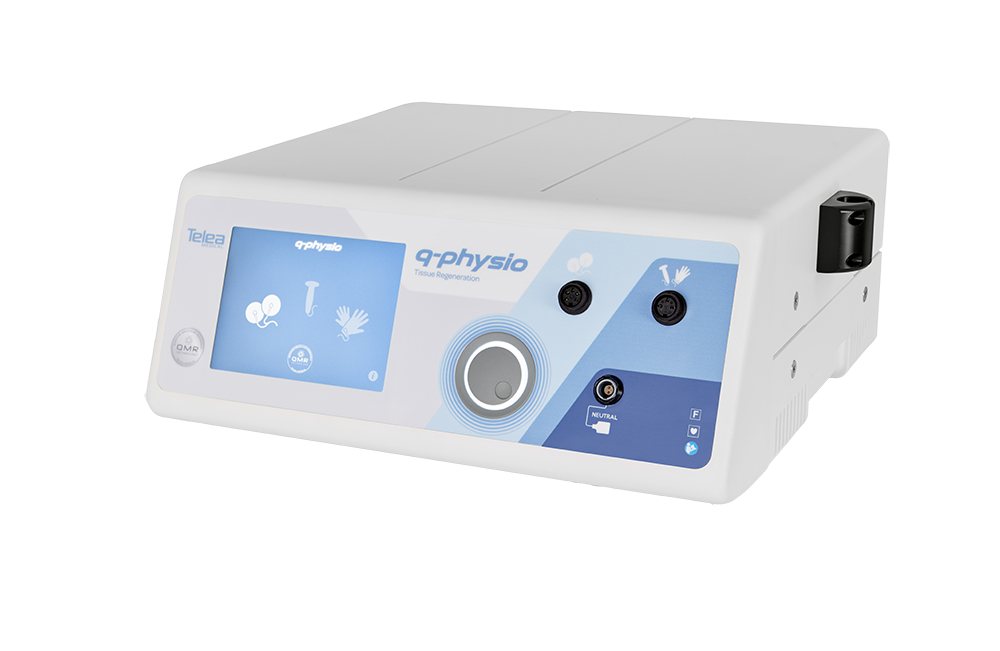What happens in the brain of infants is especially interesting to developmental and neurocognitive psychologists. Up to now using EEG on infants, however, was a scientifically risky process with lots of dropout due to the long and – for the infant – uncomfortable preparation of the measurement. With the new R-Net system, the preparation time can be reduced to about five minutes – giving the scientists more time to collect good data.
In this guide, we provide a detailed walkthrough showing how to use the R-Net in studies with infants.
Overview
1. Before the participant arrives
a. Provide sufficient information to the caregivers
b. Preparation of materials
2. When the participant arrives
a. Inform the caregivers and make sure the infant is fine
b. Fit the R-Net
c. Adjust the cables
d. Check impedances
3. Starting the measurement
a. Instruct caregivers
b. Record video of the experiment
4. After the experiment
a. Show signal to caregiver
b. Clean the equipment
1. Before the participant arrives
a. Provide sufficient information to the caregivers
Often caregivers are not familiar with the EEG measurement and are afraid to participate in EEG experiments with their infants. When inviting the families, always make sure to provide an information sheet in which you explain the technique, state possible risks such as skin irritations, and list possible counter indications. You can also include pictures of an infant with the cap (make sure to have the consent of the family for this) so the caregivers know what to expect.
Some caregivers expect that bringing their infant to an EEG measurement will provide them with medical information about the infant. Thus, it is important to state that the measurement does not have a diagnostic purpose and that you cannot deliver any medical information.
In contrast to EEG measurements with adults, infants do not need to come with their hair washed. As they have little and thin hair, the measurement works well without it. With the R-Nets, the infants also do not need their hair to be washed after the experiment. It only gets a little wet, but you can easily rub it dry with a towel or use a hair dryer.
If you do not have the possibility to measure the head circumference of the infant yourself before the EEG measurement, you can use the pre-testing information to ask for it. Infants regularly visit the doctor and have their head circumference measured there – if the last measurement is not more than four weeks ago, you can use that number. Heads do not grow as fast as the rest of the body.
b. Preparation of materials
Make sure to have the materials you need during the testing prepared. This should include:
- an interesting toy for the infant in case you need distraction
- a selection of infant-friendly videos you can play during the preparation
- hook and loop fasteners or other material to fix the cap’s cables
- a measurement band
You can already prepare the solution needed to prepare the R-Net. For this, fill the measurement cup labelled “electrolyte/water” with 1.5 liters of distilled water and add 1 teaspoon of potassium chloride (KCl) per liter (i.e. 1.5 spoons). Also, add a couple of drops of baby shampoo. Mix the solution.
Tip: This video shows how to prepare the solution.
If you know the head circumference of the infant, you can put the R-Net of the correct size into the mix already. You know the size of the net from a small label close to the white plastic bar (this is called the “clamping block”). Take the size that is closest to the head circumference of the infant. If the circumference is in between two cap sizes, take the larger one so that the infant’s ears fit nicely into the cap. When you put the net in the solution, make sure to cover the splitter boxes with a towel, so they do not get wet. You can also store them on a shelf above the measurement cup to make sure no water drips on them. Make sure that the whole R-Net is within the solution. The net needs to soak for a minimum of 15 minutes but not more than 30 minutes. For example, you can put it into the solution 15 minutes before the scheduled appointment and set a timer for 30 minutes so that you know when to take it out of the solution if the family is running late. If you have other experimental tasks planned before the EEG measurement (something we would not recommend), make sure to plan the soaking time accordingly.
You can already prepare the disinfection solution. For this and for cleaning the R-Net, Brain Products officially recommends using distilled water; however, we’ve been using filtered water instead and so far, everything works fine in our lab with this alternative solution. (Be aware that this may increase corrosion of the material). Fill 1.5 liters of distilled/filtered water in the measurement cup labelled “disinfection”. Add the appropriate amount of your disinfectant and stir the solution.
2. When the participant arrives
a. Inform the caregivers and make sure the infant is fine
When the families arrive, make sure to bring them to the experimental room as soon as possible and inform them there. This way, the infant can already get used to the experimental conditions that might be very unfamiliar (i.e., many distracting cables and equipment being around, different lighting conditions, etc.).
Put a nice, comfortable chair for the caregiver to sit on in front of the screen. Letting the infant sit on the caregiver’s lap might increase movement artefacts in comparison to letting them sit in an infant’s chair. However, the infant might feel more comfortable on the caregiver’s lap and be less fussy. Decide how to arrange infant and caregiver depending on the specific experiment. If you let the infant sit on the caregiver’s lap, make sure to have some pillows available to make it more comfortable for the caregiver if necessary. This way you can at least reduce movements from the caregiver.
If you do not have the head circumference of the infant yet, make sure to measure it and prepare the R-Net. As you best have two experimenters ready for the whole experiment, one can continue informing the caregivers, while the other is preparing the cap.
We usually bring a cap in a different size to show the caregivers the cap and explain again how it works. In the meantime, you can give the infant an interesting toy.
Ask the caregiver if they think the infant is fine. Offer the possibility to feed the infant. Often caregivers think that the infant will make it through the experiment, and they will feed the infant afterwards. However, it is better to have the infant as happy as possible before the experiment.
b. Fit the R-Net
After 15 minutes of soaking, take the net out of the electrolyte solution and make sure to dry excess water. You do not need to be afraid that the cap will not work if it seems dry from the outside, if the sponges are soaked with the solution. On the contrary, having the cap too wet will lead to bridges easily. Wring out the chinstraps of the cap. They usually are also soaked with the solution, but them being wet is uncomfortable for the infant. So, make sure to get them as dry as possible.
During the preparation, play some infant-friendly videos so the infant is distracted and does not realize the cap immediately. This way you will also have the infant look straight, which will make it easier to fit the cap correctly.
At best, you should have two people fitting the cap. One will kneel in front of the infant and make sure to fit the cap close to the eyebrows of the infant. The other one will hold the back of the cap and make sure to place it over the head of the infant. It is particularly important to fit the cap as fast as possible, so the process does not bother the infant. It is worth training the team of experimenters on a Styrofoam head a couple of times before they start testing real infants, to make sure everyone exactly knows what to do. Changes in the team always worsen the results for some time as insecurities easily transfer to the mood of the infant.
Close the chinstraps of the cap and make sure that the white plastic bar (i.e. the clamping block) is approximately at the jaw of the infant. You might need to cut the foremost tube on the plastic bar as this might tickle the infant near the mouth, raising its attention towards the cap.
Tip: This video shows how to exchange tubes of the R-Net to optimize its fit.
After you fit the R-Net, make sure that all the electrodes are straight and in contact with the head, meaning that it should be symmetrical on both sides. Cz should be centered between Nasion-Inion and the preauricular points. Especially the electrodes on top of the head are prone to being twisted; probably you need to adjust them manually.
c. Adjust the cables
In your lab environment, make sure to be able to place the cables and boxes of the cap behind the infant. Anything that is in sight of the infant will provoke the infant to grab it. For example, you can lay the cable over the shoulder of the caregiver and fix it there. Fixing the cable will also limit the movement possibilities of the infant, leading to less movement artifacts.

Image showing the typical setup in our lab at LMU Munich
d. Check impedances
Plug in the amplifier cables into the boxes and start the impedance measurement. The R-Nets are capable to tolerate high impedances up to 150 kOhm. However, the BrainAmp amplifiers only can measure up to 100 kOhm. Therefore, you can work on the impedances until they are below 100 kOhm.
To work on the impedances, you can massage the cap with your hands. This way the infant does not attend to the cap as much as if you apply additional solution. In addition, as they have little hair, this often is enough.
3. Starting the measurement
a. Instruct caregivers
Before finally starting the measurement, instruct the caregiver about their expected behavior during the measurement. You probably cannot stop the infant from moving but ask the caregiver to remain as still as possible. If the infant does not need their hands during the task, ask the caregiver to gently hold onto the infant’s hands. This way you reduce the possibility for the infant to grab and pull the R-Net.
b. Record video of the experiment

Screenshot from Video Recording
Make sure to record a video of the infant during the experiment. In the best case, the video is already time-locked to your EEG recording.
For example, you can use BrainVision Recorder with a video recording add-on to simultaneously record a video and the EEG signal. This way you can easily code whether the infant was attentive to the screen in the respective trials. You can also monitor the infant’s attention live and trigger attention getters or breaks during the experiment.
The regular use of attention getters during the experiment is extremely helpful. Usually, right after the attention getters, the infant is attentive and still for a couple of seconds, giving you a much better signal for this period.
4. After the experiment
a. Show signal to caregiver
If possible, you can show the EEG signal to the caregiver after the experiment. They will not see much in it of course, but knowing how it looks like is mostly interesting to the caregivers. You can also offer screenshots of the video you recorded so that they have a picture of the infant with the cap. This will increase the compliance to your study, lab and further experiments.
b. Clean the equipment
After taking the cap off the infant, wrap the splitter boxes in a towel and put the cap into the measurement cup labelled “disinfection” that you already prepared before the experiment. Make sure all of the cap is completely under water and let it sit for about 10 minutes. In the meantime, you can already clean the measurement cup labelled “electrolyte/water” and fill it with one liter of distilled water. After the disinfection, place the cap into this measurement cup and wait for one more minute. Move the cap around a little bit to make sure that all disinfectant solution is washed out of the cap. This way you can reduce the risk of skin irritations with the next use. Put the cap for another minute into fresh water for two more times. Afterwards, hang the cap to dry. Make sure that the boxes are stored higher than the cap so that no water can drip into the boxes.


































